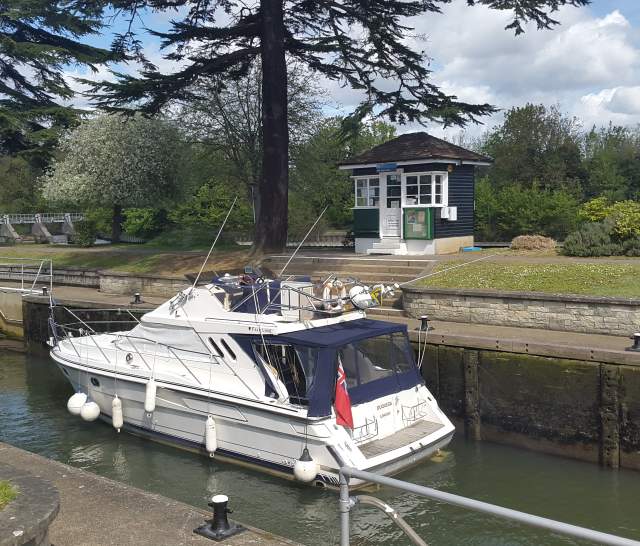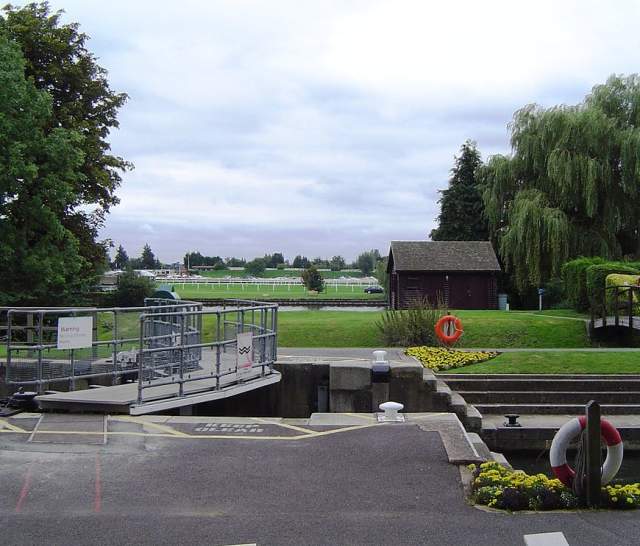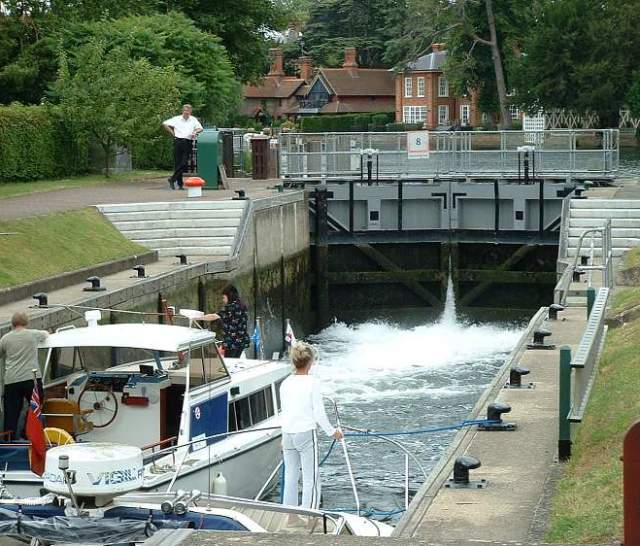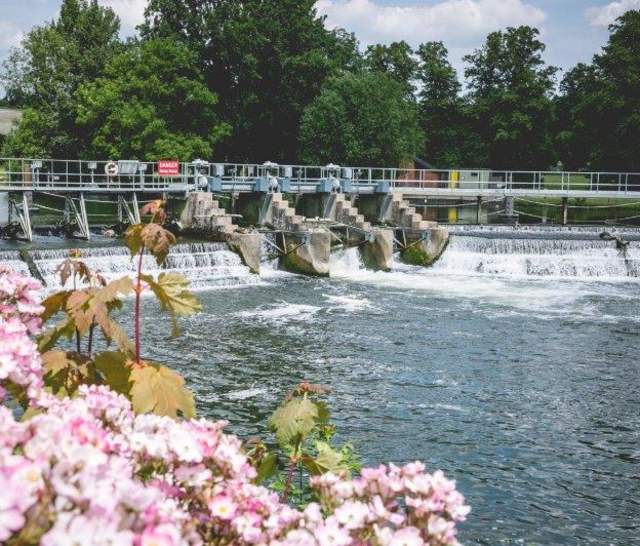River Thames Locks
There are 45 locks on the non-tidal River Thames.
The first proper locks appeared in the 1630s. Each one has its own individual history and unique personality. From the famous 'Father Thames' statue and the site of the first pineapple grown in Britain to a garden redesigned by the BBC's Ground Force. A lock is a large chamber, built across the stream, with large gates at either end that hold back the water. Boats can enter the lock at one level, the gates shut behind and the lock then fills or empties of water until the boat has reached the next level on the river.
Lock keepers on the Thames are generally available between 9am and 6pm during the summer season and take their lunch 1-2pm.
Many of the locks provide a great place to start your trip along the River Thames while our map shows attractions and accommodation. Here are some suggestions:
The Thames Path National Trail follows the bank of the River Thames for 184 miles through peaceful water meadows rich in wildlife, historic towns and cities such as Oxford, Henley and Windsor, many lovely villages and some of the best known landmarks of London. Start your walk from one of the Locks.
The Locks
St Johns Lock - The first pound lock on this site was built in 1790 and it is the highest lock on the River Thames. The lock and its adjoining bridge are named after a priory dedicated to St John the Baptist, which has long since disappeared
Buscot Lock - Once owned by Thomas Cook, it is now a National Trust picnic area. This is a beautiful area with frequent sightings of otters, kites and kingfishers. You can even stay at the lock in Lock Cottage available through the National Trust. Cotswold Boat Hire is based here.
Grafton Lock - The lock itself has been in existence since 1896, when the previous flash weir - called Day's Weir - was replaced by the manual-beam pound lock we see today.
Radcot Lock - Radcot Lock began life as a flash lock in the mid-1700s.
Rushey Lock - Rushey Lock was built in 1896, and before that it was one of the many flash weirs on the Thames.
Shifford Lock - Shifford was one of the last locks to be built on the River Thames, it was finished in 1897.
Northmoor Lock - The seventh on the River Thames - is one of the latest to be built along the river, constructed as it was in 1896 and replacing the ancient Hart's and Ark flash weirs. It is located just east of the beautiful Cotswolds, near Lambourn Downs.
Pinkhill Lock - Situated between Eynsham and Oxford Pinkhill Lock is a peaceful spot, perfect for a riverside walk along the Thames Path or a break while kayaking or paddleboarding.The manual beam pound lock at Pinkhill was built in 1791, and it looks today just as it did in the 18th century, when merchants' barges were a common sight, travelling to and from London.
Eynsham Lock - Eynsham Lock was built quite recently, in 1928, as part of plans to make the Thames navigable to Lechlade. The nearby Swinford Toll Bridge – built in 1769 during the days of stage coaches, highwaymen and turnpikes – is described as the finest of the many bridges over the Thames with its Georgian architecture.
Kings Lock - In 1289 a weir and fish traps were recorded on the current site. It wasn’t until 1928 that the pound lock, which is still in use today, was built to replace a flash lock.
Godstow Lock - Godstow Lock has the distinction of being the highest hydraulic-operated pound lock on the River Thames.
Osney Lock - There was a flash weir at Osney (or Oseney), recorded as far back as 1227 when Henry III was King of England. The neat, efficient lock you see at Osney today was built in 1790 by the inmates of Oxford Prison.
Iffley Lock - It was built in 1632. It was one of three to be built in the 17th century – the others are at Sandford, and Swift Ditch (near Abingdon Lock). When the lock was rebuilt in 1924 it was opened by Lord Desborough, then Chairman of the Thames Conservancy. Iffley marks the starting point of organised rowing races - there are around 10 regattas every year - in Oxford.
Goring -This lock began life back in the 1500s as a weir and became a lock in 1787. It is situated at the Goring Gap in the Chiltern Hills and borders Goring-on-Thames, Oxfordshire and on the opposite side of the river is Streatley-on-Thames, Berkshire. You may see kingfishers, buzzards, red kites and Egyptian geese. You can choose to join the Thames Path or The Ridgeway here. Enjoy lunch or afternoon tea at the nearby Swan at Streatley.
Boulters - This was a popular lock in Victorian times and the favourite pastime of the wealthy was to enjoy a leisurely punt. Today the lock is still popular today with nearby mini-golf complex and large playground ideal for all the family. There is a Pay & Display car park and you can dine in th Boathouse at Boulters Lock.
Days
Said to be the most historic place in Oxfordshire, where a hilltop fort was built by iron-age man and it has also been a religious area. You can walk to the nearby Wittenham Clumps. The World Poohsticks Championships are held here.
Penton Hook
One of the newer locks this was opened in 1815 and is the ‘highest lock’ built by the Corporation of London. There is a large marina here, Penton Hook Marina , which is Britain’s largest inland marina and also Penton Hook Island which is rich in wildlife.
To find out more about the locks
If you want to find out about the facilities at each lock, visit the Environment Agency locks page. Please note that when visiting a lock site, care should be taken at all times.



